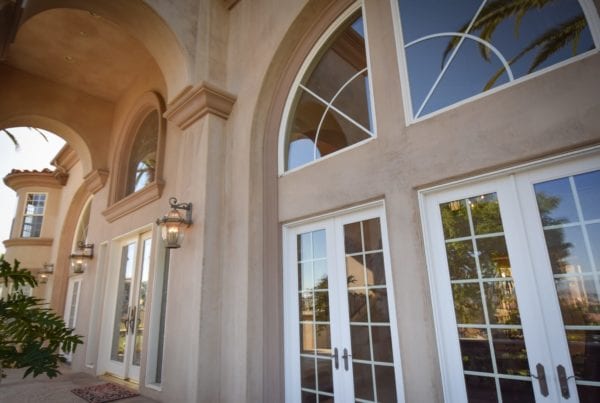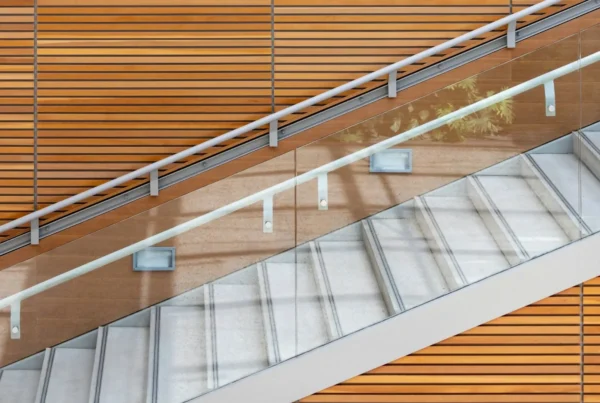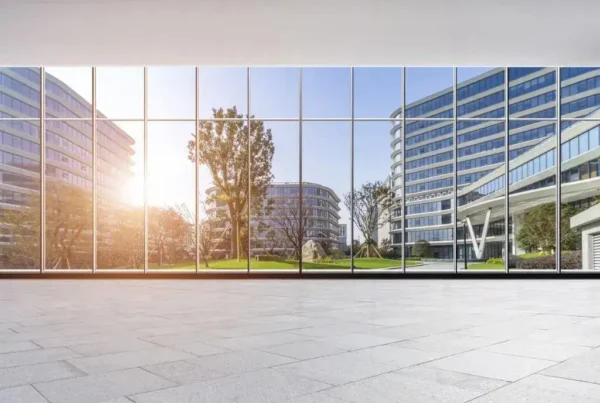Government buildings play central roles in their communities, often serving critical functions, offering essential services, and hosting important activities and events. The varied roles that government buildings fill make their security, privacy, appearance, and energy efficiency top priorities.
However, with the architectural and budgetary limitations that government buildings often face, it can be difficult to make upgrades that address all of these priorities, especially when it comes to updating windows to improve their performance and aesthetics.
Enter window film: a versatile solution that can help government buildings improve safety, increase privacy, provide aesthetic improvements, and boost energy efficiency — without the need for extensive renovations. Installing certain types of window film in government buildings can help create a safer, more comfortable and more efficient environment for both employees and visitors.
Four Types of Window Film for Government Buildings
Window films come in various types, each designed to address specific needs and challenges and provide certain benefits.
For government buildings, the four primary types to consider are safety and security window film, privacy window film, decorative window film, and energy-efficient window film. Each type offers distinct advantages that contribute to the overall functionality and appearance of government facilities.
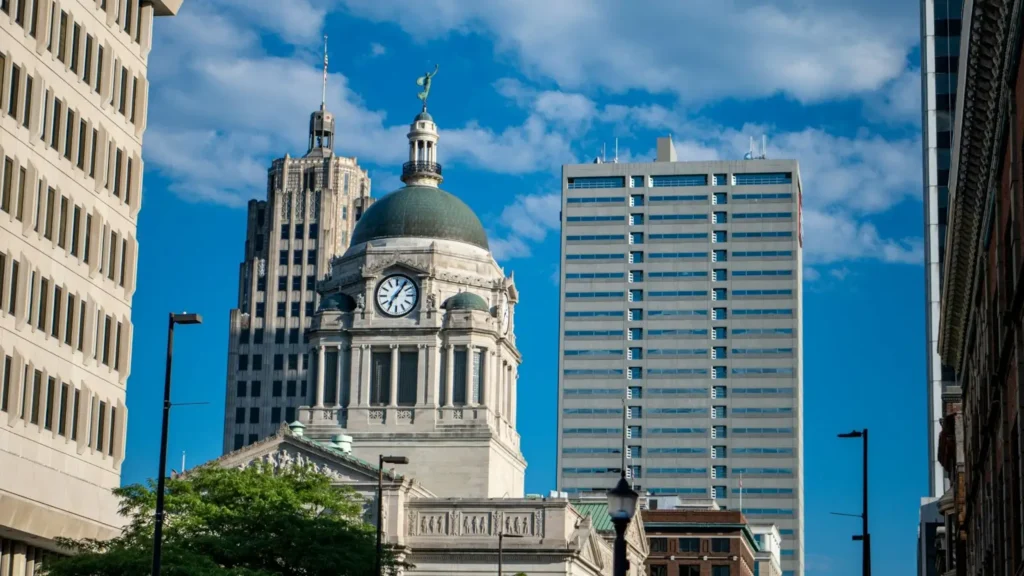
Safety and Security Window Film for Government Buildings
Safety and security window film is designed to reinforce windows and hold broken glass in place, providing an additional layer of protection against break-ins, vandalism, and natural disasters or accidental impacts. This type of film works by holding the pieces of glass together even when a window is shattered, preventing dangerous shards from causing injury or further damage.
In government buildings, where security is paramount, safety and security window film can deter would-be intruders and delay forced entry attempts. While using security window film in government buildings won’t prevent forced entry altogether, it can give security personnel and police more time to react to incidents and protect building occupants from glass-related injury.
Safety and security window film also prevents windows from shattering inwards and reduces the risks of broken glass hazards due to storm damage or other accidental impacts.
Privacy Window Film for Government Buildings
Privacy window film is essential for government buildings where confidentiality and discretion are top concerns. These films can obscure the view from outside while maintaining natural light and visibility inside, helping to ensure that sensitive activities and information are not visible to unauthorized individuals.
Privacy films are available in various opacity levels and finishes, such as frosted or tinted, allowing for customization based on specific needs and goals. For instance, frosted privacy films can be used in meeting rooms, offices, and other areas where confidential discussions take place, while tinted films can be applied to exterior windows to add daytime privacy (as well as reduce glare and improve indoor comfort).
There are even special “cloaking” window films designed specifically to obscure digital screens to the outside world.
Decorative Window Film for Government Buildings
Decorative window film offers a dual function: increasing the aesthetic appeal of government buildings while providing practical benefits. These films can be customized with various patterns, colors, and designs, allowing for creative expression and branding.
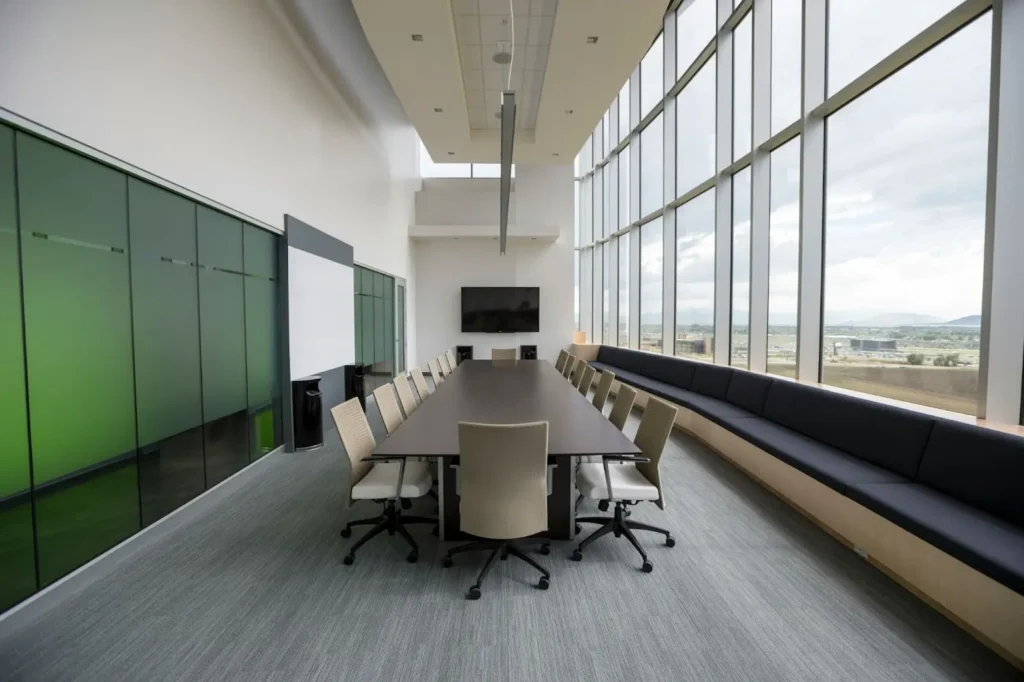
In addition to improving the visual appearance of a building, decorative window films can also contribute to privacy and control light diffusion. For example, a patterned frosted film can add a layer of opacity to windows, creating a visually pleasing barrier that obscures the view without completely blocking natural light.
Decorative films can be used in public areas, lobbies, and conference rooms to create an inviting atmosphere that reflects the building’s purpose and identity. For instance, decorative films might incorporate elements of local culture or historical significance, reinforcing the building’s connection to the community it serves.
Energy-Efficient Window Film for Government Buildings
Energy-efficient window film is an effective solution for reducing energy consumption and improving the environmental sustainability of government buildings. These films are designed to optimize the thermal performance of windows, reducing heat gain during the summer and heat loss during the winter.
These qualities not only help control the building’s interior temperature, but can also contribute to significant energy savings and create a more comfortable environment for building occupants and visitors alike.
In government buildings, which often have large glass surfaces and high energy demands, the application of energy-efficient window film can indeed lead to substantial performance improvements and cost savings.
Since these films work by reflecting a portion of the sun’s heat away from the building, they reduce the need to constantly run air conditioning systems in hot weather. During colder months, they help retain indoor heat, reducing the reliance on heating systems. This dual function of energy-efficient window film not only lowers utility bills but also reduces the building’s carbon footprint, aligning with sustainability goals and regulations.
By investing in energy-efficient window film, government buildings can also demonstrate a commitment to environmental responsibility and fiscal prudence, setting a positive example for the community and other institutions.
Conclusion
Window film offers a cost-effective solution for government buildings looking to upgrade their windows, addressing key concerns such as security, privacy, aesthetics, and energy efficiency.
By selecting the appropriate type of window film — whether it be safety and security film, privacy film, decorative film, or energy-efficient film — government facilities can improve both their functionality and appearance without the need for costly and disruptive renovations.
Safety and security window films provide a crucial layer of protection against potential threats and natural disasters, increasing the safety of occupants and helping to safeguard sensitive operations.
Privacy window films help maintain the confidentiality of government-related activities while still allowing some natural light to permeate the space, creating a comfortable and confidential environment.
Decorative window films increase the visual appeal of buildings and can incorporate cultural or historical elements, strengthening the building’s identity and connection to the community.
Investing in the right combination of window films is a cost-effective and efficient way for government buildings to address multiple challenges and improve their overall window functionality and appearance.

